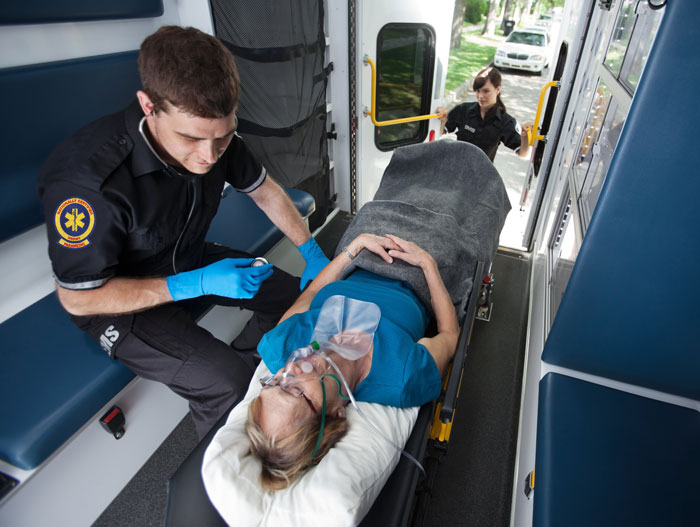Advice to Students and Candidates for Certification
If you want to pass the NREMT exam, you need to be ready to demonstrate your knowledge and prove your knowledge is entry-level. I have some suggestions to help you.
- First, I hope you read the book! But what book? While there are a number of well-written EMS books available, my preference is “Prehospital Emergency Care” by Joe Mistovich. Written by an EMS expert who I highly respect, this publication is comprehensive, does an excellent job of providing EMT knowledge, and can serve as a valuable reference for many years.
- When reading the book, highlight information you think is important to memorize, as it might be on a teacher exam or your certification examination.
Although I hate memorization, there is no better way to retain knowledge when beginning to learn a new subject.
- I suggest memorizing signs, symptoms and treatments for all injuries and diseases as you progress through the course. You will soon see that many signs and symptoms are the same for many diseases and injuries, such as tachycardia. Memorize the ones that are unique to a specific injury or disease. Something like urticaria (hives), for example, which is likely to be present in allergic reactions. These are called “cardinal” signs of a disease or injury. In some cases, patients have diseases and injuries in which the “cardinal” sign is not present. You will have to make a “field” diagnosis in order to begin a treatment plan. So, memorization has a role, and that information will come from your book.
- Listen to your instructor in class and take notes. Your instructor should be providing knowledge not found in your book. Make note of them and memorize them as well.
- Turn off your cell phone while in class — it only takes a few seconds of distraction to miss an important piece of information that could be on your exam!
- Study as the course progresses. Incorporate use of EMT PASS or AEMT PASS as you progress only after you have completed the lectures, read the book, and memorized what you think is important.
- Study groups can be valuable to participate in toward the end of the course. Ask each other questions. Talk about the answers. Each study group should have both strong and weak students. Remember, EMS is a team event, and you should start learning how to work as a team in study groups.
- Don’t try to memorize practice test questions. That can, and likely will be disastrous! Memorize the knowledge base from which the question is derived. If you’ve memorized “lower level” questions (often found in inferior test preparation products) and get them right on the NREMT exam, for example, the computer will give you more difficult questions because it will think you know the material. If you don’t really know the necessary EMT material, but have just memorized questions, you will inevitably get the more difficult questions wrong, and fail the exam. You will have wasted your time and money studying easy questions. Remember that none of the test questions available to you, including those in EMT PASS and AEMT PASS will appear exactly the same way on the test. Memorize why an answer is correct. When you have the knowledge in your head, use of that knowledge will help you get questions correct even if the stem of the question is different.
- Study for a couple of hours every night the week before the test. Do not study the day of the test; it will simply tire you out. Besides, you should have learned everything you need to know before the day of the exam.
- Be confident!
- When you get to the Pearson test center, carefully follow their instructions: empty your pockets, don’t cheat, and avoid helping others. Make sure you understand how CAT testing works, and how to progress through the test. Don’t watch the clock; you’ll have plenty of time.
Don’t worry about how far along you are on the exam; just take each question one at a time–you won’t see the same question twice and the answer to one question will not help you answer another.
When you get to the Pearson test center, carefully follow their instructions: empty your pockets, don’t cheat, and avoid helping others. Make sure you understand how CAT testing works, and how to progress through the test. Don’t watch the clock; you’ll have plenty of time. Don’t worry about how far along you are on the exam; just take each question one at a time–you won’t see the same question twice and the answer to one question will not help you answer another.
Once you’ve given a question your best shot, (chosen the correct one or most likely correct), then move on.
These are factors that can help you pick the correct or best answer. The first factor is your knowledge base. If you didn’t read the book, took lecture notes and studied, there is no need taking the test. To pass you have to have the knowledge and if you didn’t spend time reading, studying and practicing test questions that range in difficulty you will be unprepared.
Including on this website absolutely everything a test candidate needs to know to pass the NREMT exam is impossible. That information is in the book! Teaching a test candidate how to react to test questions with just a few sample questions is not possible either. This website does contain valuable information about testing for both you and your teacher. This website explains how you can profit from the practice test questions found in EMT PASS and AEMT PASS.
I am very confident if you read those questions, practice taking them, listen to the debriefs of questions you missed, and learn the knowledge tested in them, you will do very well on your certification examination.
And you can become an EMT or AEMT who can proudly serve the American public.


